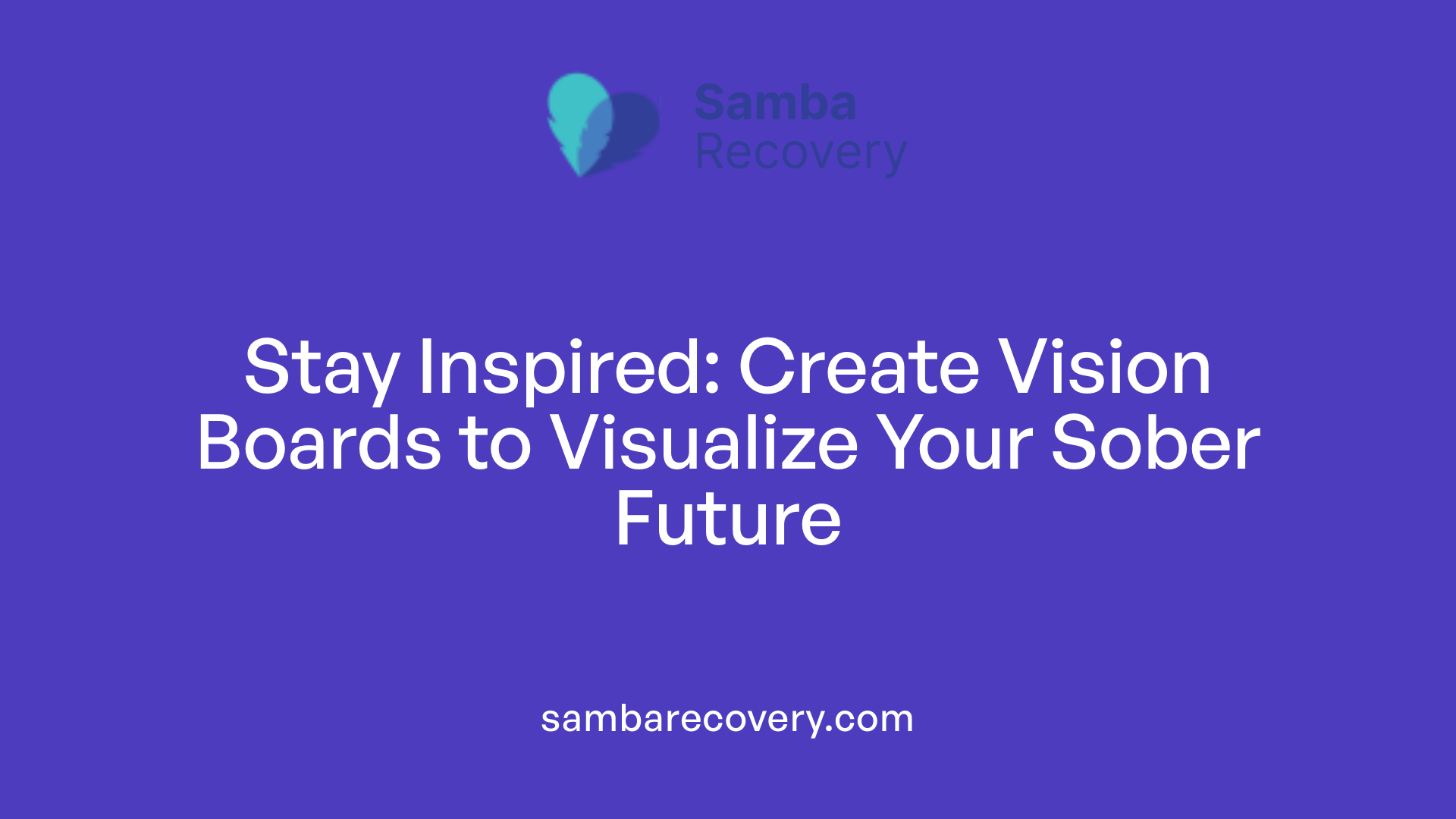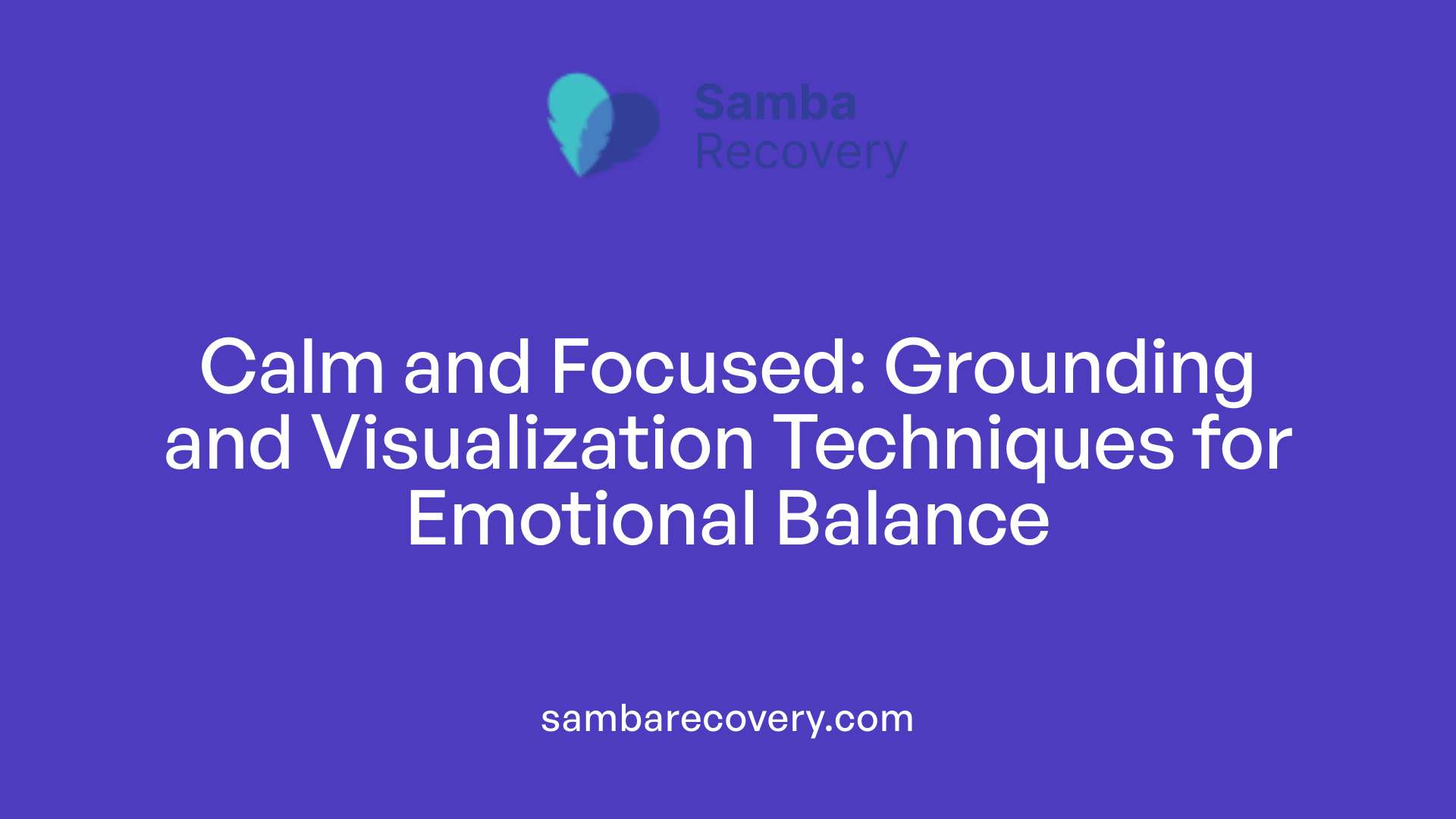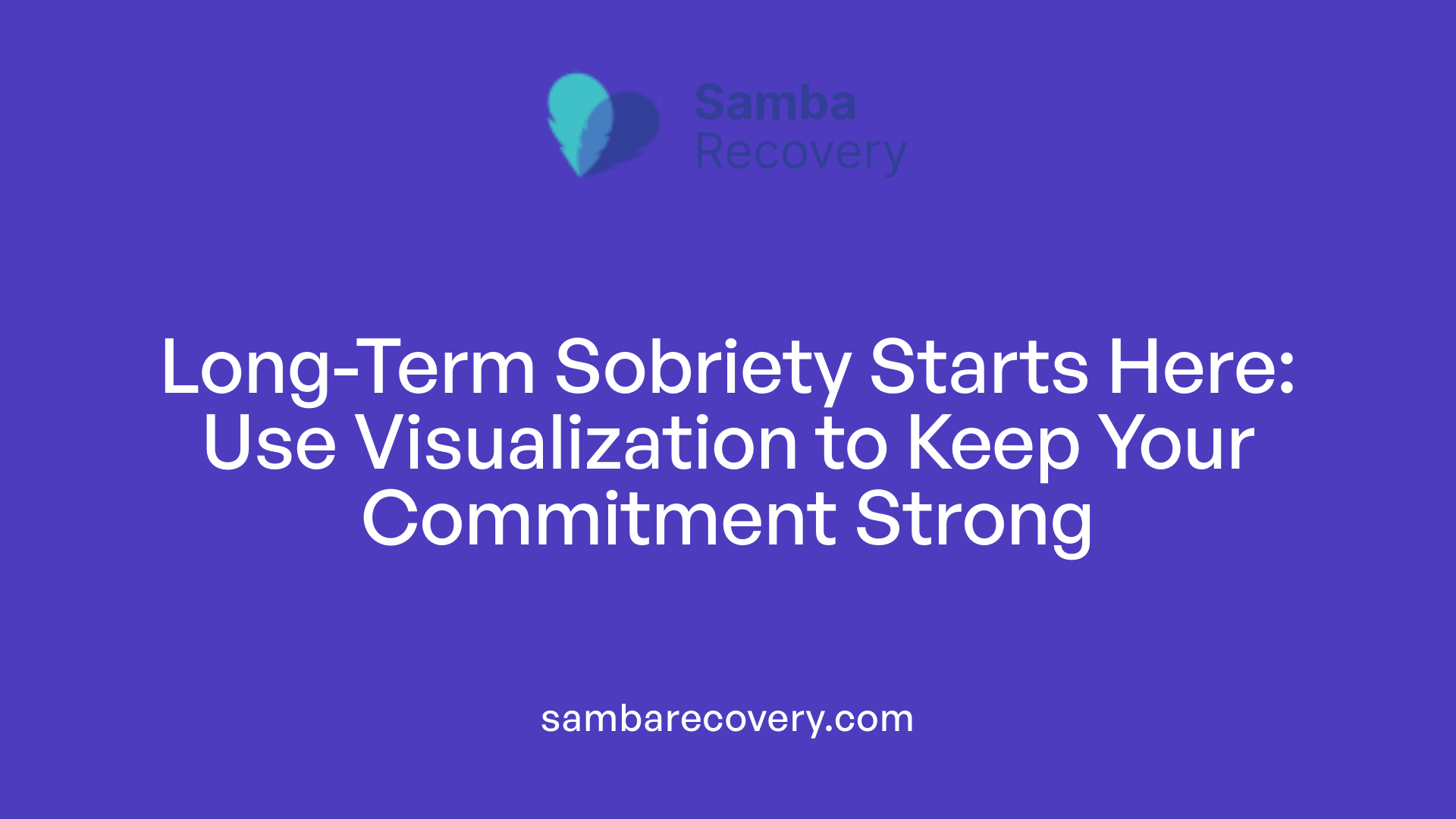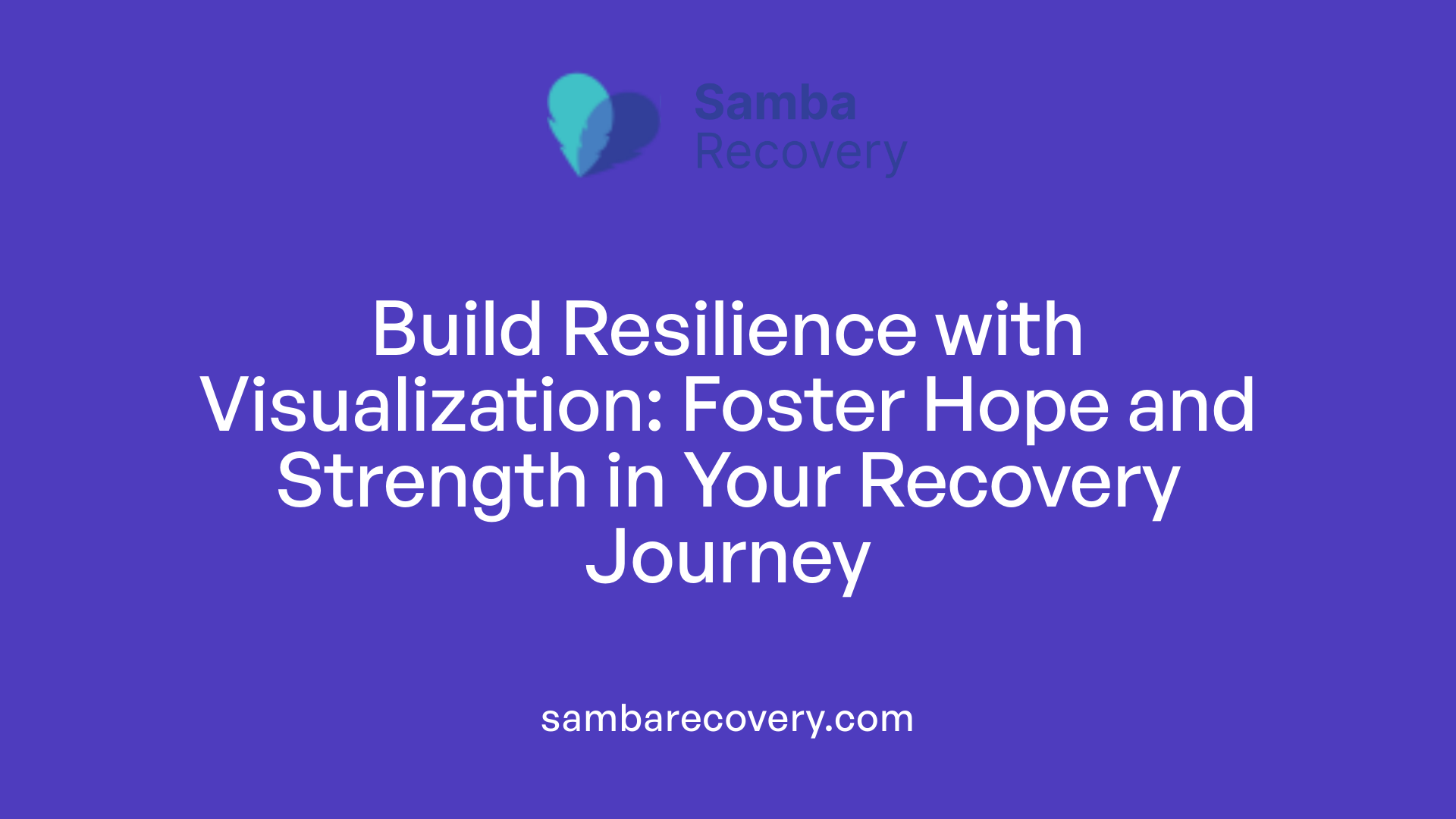Visualization techniques to support sobriety
August 1, 2025
Harnessing the Power of Visuals for Lasting Sobriety

Introduction to Visualization in Addiction Recovery
Visualization techniques have emerged as powerful tools in addiction recovery, facilitating emotional resilience, motivation, and sustained sobriety. By creating vivid mental images of a successful, drug-free life, individuals can reinforce their goals, manage stress, and navigate challenges with confidence. This article explores various visualization strategies, including guided imagery, vision boards, grounding exercises, and their integration into evidence-based therapies, illustrating how they support long-term recovery.
Foundations of Visualization Techniques Supporting Sobriety
How does creating vivid mental images of a sober future support recovery?
Visualization in addiction recovery involves forming detailed mental pictures of life beyond substance dependence. Imagine vividly yourself enjoying a life free from addiction—reconnecting with loved ones, achieving personal goals, or engaging in fulfilling activities. These images serve as powerful anchors that reinforce motivation and focus.
By mentally rehearsing these positive scenarios regularly, individuals strengthen their commitment to sobriety. This process taps into neuroplasticity, the brain's ability to rewire itself, encouraging healthier habits and mindset shifts. Visualization helps make the abstract goal of sobriety feel tangible and attainable, reinforcing the desire to stay on the recovery path.
How does sensory detail and emotional engagement enhance visualization?
Engaging all senses during visualization—such as imagining the smell of a favorite dish, the feel of a morning breeze, or the sounds of a lively gathering—deepens the experience. Adding emotional elements like feelings of joy, pride, or gratitude intensifies these images.
This emotional and sensory involvement activates brain regions linked to reward and motivation, making the visualization more effective. For example, feeling the warmth of gratitude during envisioning success can trigger positive emotions that boost confidence and resilience.
What are recommended routines for daily practice to reinforce recovery goals?
Creating a consistent routine is crucial. Find a quiet, comfortable space without distractions and dedicate 10 to 15 minutes each day for visualization exercises. Start by imagining a peaceful scene or a positive future scenario relevant to your personal recovery journey.
Incorporate visualizations of daily routines, loved ones, and fulfilling activities. Feel the emotions associated with these images—like happiness, hope, and gratitude. Repeating this practice daily helps embed these positive visions into your subconscious, strengthening your resolve.
Additionally, pairing visualization with affirmations such as "I am strong," or "I am capable of living sober," further consolidates your commitment. Using tools like vision boards—collages of images and words that represent your goals—can serve as constant visual reminders, reinforcing your dedication to sobriety.
These practices work synergistically to fortify mental resilience, turn hopes into achievable realities, and support sustained recovery efforts.
The Role of Vision Boards and Visual Tools in Recovery

How do vision boards and other visual tools support recovery from addiction?
Visual tools like vision boards are powerful aids in addiction recovery because they help individuals stay focused on their recovery goals. By creating a visual representation of their dreams and aspirations—such as living sober, reconnecting with loved ones, or achieving personal milestones—people can reinforce a positive outlook on their future. These images and words serve as daily reminders of their commitment, boosting motivation and confidence.
Visualization practices involve imagining oneself enjoying a life free from addiction, engaging all senses, and feeling positive emotions such as hope, joy, and gratitude. When individuals regularly use these visualizations, they strengthen their mental resolve and resilience, especially during challenging moments like cravings or doubts. Visual tools, including vision boards, act as emotional anchors that help manage stress and redirect focus toward healthier choices.
Creating and displaying vision boards effectively
Making a effective vision board involves several simple steps:
- Reflect on personal recovery goals: Think about what success looks like and what motivates you.
- Gather inspiring images, words, and symbols: Use magazines, printouts, or drawings that resonate personally.
- Arrange them authentically: Create a layout that feels meaningful to you.
- Place it prominently: Display the board in a visible location such as a bedroom or workspace.
The act of crafting the board is a reflective process, grounding your intentions and strengthening your emotional connection to your goals. Checking in with the vision board regularly reinforces your commitment and keeps motivation high.
Scientific insight and benefits of visual tools
The effectiveness of visualization and vision boards is supported by neuroscience. Engaging the brain through imagery activates similar neural pathways involved in actual experience, a phenomenon rooted in neuroplasticity—the brain’s ability to rewire itself. Visual tools stimulate positive neural activity, promote hope, and help rewrite negative thought patterns associated with addiction.
Research shows that visual strategies can:
| Benefit | Description | Additional Insight |
|---|---|---|
| Goal Focus | Keeps attention on desired outcomes | Helps prevent relapse by clarifying purpose |
| Emotional Regulation | Manages feelings of anxiety and stress | Aids in coping during cravings |
| Confidence Building | Enhances self-efficacy | Encourages proactive problem-solving |
| Stress Reduction | Promotes relaxation | Lowers cortisol levels and anxiety |
By providing a concrete and adaptable method to envision success, vision boards and visual tools support ongoing motivation and emotional resilience. They serve as a practical supplement to traditional treatment approaches, helping individuals rewire their brains toward healthier habits and a sober lifestyle.
Grounding and Visualization for Emotional Regulation

How can grounding and visualization exercises be used for emotional regulation in recovery?
Grounding and visualization techniques serve as powerful tools to help individuals manage their emotions effectively during recovery. These practices focus on anchoring the mind in the present moment and creating mental images that promote calmness.
Sensory awareness exercises are often the first step. By paying attention to sights, sounds, textures, and smells around them, individuals can shift their focus away from distressing thoughts or cravings. For example, noticing the feel of a textured object or listening to ambient sounds helps create a sense of stability.
Visualization involves imagining peaceful and calming environments, such as a serene beach or tranquil forest. Guided imagery can deepen this experience, encouraging feelings of safety and relaxation. The mental picture stimulates sensory engagement—visual, auditory, or tactile—enhancing its calming effects.
These techniques are especially effective in reducing anxiety and cravings. When feelings become overwhelming, deep breathing combined with sensory focus or visualization can calm the nervous system, making it easier to resist urges and avoid emotional outbursts.
Building emotional resilience is another benefit. Regular practice strengthens the ability to stay present and handle difficult feelings without resorting to substance use. Incorporating grounding and visualization exercises into daily routines or therapy sessions can foster lasting emotional stability, supporting long-term recovery goals.
In summary, grounding and visualization are accessible, adaptable methods that improve emotional regulation, diminish stressors, and reinforce resilience. Their consistent use enhances mental clarity, promotes positive emotional states, and helps prevent relapse triggers.
Guided Visualization and Meditation Practices to Overcome Social Fears
How can guided visualization and meditation practices help overcome social fears related to sobriety?
Guided visualization and meditation are powerful tools that can help individuals address social fears tied to sobriety. These practices involve creating detailed mental images of positive social scenarios, which promote relaxation and reduce anxiety.
By consistently imagining oneself engaging confidently in social interactions, individuals can train their brains to associate social settings with feelings of calmness and positivity. This mental rehearsal strengthens neural pathways related to emotional regulation and self-control, making real-life social encounters feel less intimidating.
These techniques also help manage physiological responses like tension and stress, which often accompany social fears. Visualization of future successful social events boosts motivation and reinforces commitment to staying sober.
Relaxation techniques for reducing social anxiety
Relaxation methods such as mindful breathing, body scans, and guided imagery help calm the nervous system. For example, deep breathing exercises focusing on slow inhales and exhales can immediately decrease feelings of panic. Body scans increase awareness of physical sensations, helping individuals notice and release tension.
Guided imagery involves imagining serene or positive social scenarios, which can serve as mental anchors of calmness during stressful social situations.
Imagery of positive social interactions
Visualizing oneself engaging in enjoyable social activities—like talking with friends or participating in group events—fosters confidence. These mental images should include sensory details: sights, sounds, smells, and feelings, which enhance realism.
Imagery can also depict overcoming challenges like handling misunderstandings calmly, further building resilience and positive expectations.
Building confidence in social situations
Regular visualization helps establish a mental blueprint of success in social settings. This practice boosts self-esteem and reduces fears of judgment or failure. Over time, it reprograms negative thought patterns, making social interactions less daunting.
Coupling visualization with other behavioral techniques, such as role-playing or gradual exposure, creates a comprehensive approach to overcoming social fears.
Integrating visualization into therapy
Therapists often incorporate guided imagery and meditation into addiction treatment plans. These practices can be tailored to individual needs, focusing on specific social scenarios or general confidence building.
Teach clients to practice daily at home, using audio recordings or scripts, to reinforce skills between sessions. This continuous mental conditioning supports emotional resilience and helps sustain sobriety by reducing social-related stress and triggers.
Digital Tools and Apps Utilizing Visualization for Sustained Sobriety
How do digital tools, apps, or online strategies incorporate visualization to help maintain sobriety?
Digital technology offers various tools that harness the power of visualization to aid individuals in their recovery journey. Many mobile applications integrate guided visualization exercises designed to promote relaxation, emotional strength, and motivation. These exercises often involve imagining oneself living a sober life, engaging all senses to make the mental images more vivid and impactful.
Progress visualization and goal-tracking features in apps serve as powerful motivators. Users can see their milestones, visualize their success, and reinforce their commitment to sobriety. This visual representation of progress helps boost confidence and maintain focus during challenging times.
Online communities and support groups also leverage visual cues and supportive imagery to reinforce recovery goals. Sharing success stories, motivational quotes, and visual representations of aspirations help members stay inspired and connected.
The benefits of these digital interventions include reducing stress and cravings, enhancing self-awareness, and strengthening motivation. By combining visual imagery with daily practices like mindfulness, journaling, and goal management, these tools create a comprehensive support system.
In sum, digital platforms that incorporate visualization techniques transform mental imagery into practical support, empowering individuals to maintain sobriety and build a positive outlook. These tools are accessible, customizable, and adaptable, making them an essential part of modern recovery strategies.
| Tool/Feature | Description | Purpose |
|---|---|---|
| Guided Visualizations | Audio or video exercises guiding users through vivid imagery | Promote relaxation, emotional resilience |
| Progress Charts | Visual tracking of milestones and goals | Boost motivation, reinforce commitment |
| Online Support Groups | Visual sharing of stories and goals | Foster community and accountability |
| Vision Boards & Visual Aids | Digital or printable images representing goals | Maintain focus and positive outlook |
| Self-Monitoring Apps | Tracking moods, cravings, and triggers visually | Enhance self-awareness and emotional regulation |
Digital visualization tools continue to evolve, offering personalized, engaging, and effective ways to support sobriety. By combining the science of mental imagery with convenient technology, individuals gain powerful resources for enduring recovery.
Mindfulness, Emotional Regulation, and Self-Help Strategies Coupled with Visualization
How are mindfulness, emotional regulation, and self-help techniques related to visualization in recovery?
Mindfulness, emotional regulation, and self-help strategies are inherently linked to visualization, creating a comprehensive approach to supporting sobriety. Visualization involves creating vivid mental images of success, which can enhance one's present-moment awareness—a core aspect of mindfulness. For example, guided imagery and mental rehearsal help individuals focus on positive outcomes, reducing anxiety and cravings.
Practicing visualization regularly, such as through vision boards or day-to-day mental pictures, helps reinforce goals and sustain motivation. These visuals serve as constant reminders of a healthier lifestyle, fostering resilience against triggers and setbacks.
Moreover, visualization techniques support emotional regulation by enabling individuals to manage their feelings more effectively. Visualizing calm scenes or successful coping can help regulate intense emotions, making it easier to stay committed to recovery goals.
Self-help strategies like mindfulness exercises, deep breathing, and positive imagery benefit from the addition of visualization, boosting confidence and reducing stress. Together, these practices cultivate a hopeful outlook, resilience, and emotional balance.
In summary, integrating visualization into mindfulness and self-help routines strengthens emotional control, enhances motivation, and builds resilience. This synergy empowers individuals to maintain sobriety, manage challenges, and foster long-term recovery success.
Therapeutic Approaches Utilizing Visualization, Including DBT and Healing Imagery Therapy
How do therapeutic approaches like DBT utilize visualization techniques to support sobriety?
Dialectical Behavior Therapy (DBT) incorporates visualization mainly through mindfulness and distress tolerance skills. Clients are guided to create mental images that help them stay present and manage intense emotions without resorting to substances. Visual exercises might include imagining calming scenes or the steps involved in coping with cravings. Such practices strengthen emotional regulation and resilience, making it easier for individuals to handle high-stress situations.
Mindfulness practices in DBT involve observing one's thoughts and feelings as if from an outside perspective. This often employs mental imagery that helps clients detach from emotional overwhelm and view their experiences more clearly. For example, clients might visualize a safe, peaceful place to reduce anxiety or imagine themselves successfully navigating challenging scenarios.
What is 'playing the tape forward' in CBT?
In Cognitive Behavioral Therapy (CBT), one effective visualization technique is called 'playing the tape forward.' This involves mentally rehearsing the negative consequences of relapse, such as losing a job, damaging relationships, or feeling ashamed. The idea is to vividly imagine these outcomes in detail, which can act as a deterrent against engaging in substance use. The technique is simple, often only requiring five to ten minutes, and helps solidify motivation for sobriety by reinforcing the long-term benefits of staying clean.
How does Healing Imagery Therapy promote relaxation and behavioral change?
Healing Imagery Therapy uses guided visualization to foster relaxation and emotional healing. Techniques include imagining serene scenes, visualizing positive outcomes, and employing calming imagery during stressful moments. These visualizations help reduce cravings, lower stress levels, and support behavioral change by engaging the mind-body connection.
Specific imagery techniques like positive imagery promote feelings of safety and calmness, while aversive imagery can be used to reinforce the negative consequences of substance use. Combining these approaches with other therapies enhances emotional resilience and helps clients develop healthier responses to stress and cravings.
How are these visualization techniques integrated into evidence-based treatment?
These visualization strategies are typically integrated into comprehensive treatment plans that include therapies such as CBT, DBT, and Healing Imagery Therapy. They serve as supplementary tools to reinforce therapeutic goals, enhance motivation, and improve emotional regulation.
In practice, therapists may teach clients how to create personalized visualizations, incorporate them into daily routines, or use tools like vision boards for ongoing motivation. Digital apps and guided recordings make these techniques easily accessible outside sessions, supporting continuous recovery efforts.
| Method | Key Feature | Purpose | Application Example |
|---|---|---|---|
| Visualization in DBT | Mindfulness, imagery | Manage emotions, reduce stress | Visualizing safe spaces during overwhelming feelings |
| 'Playing the tape forward' | Mental rehearsal | Deterrent against relapse | Visualizing negative outcomes of substance use |
| Healing Imagery | Relaxation, positive visualization | Lower stress, reinforce recovery | Imagining calm scenes during cravings |
| Integration | Combined with CBT, DBT, app tools | Support motivation, emotional resilience | Regular visualization practice, goal setting |
Structured Strategies for Maintaining Long-Term Sobriety and Building Resilience

What is the role of visualization techniques in relapse prevention and long-term sobriety maintenance?
Visualization plays a crucial part in supporting individuals on their sobriety journey. It involves creating vivid mental images of managing triggers, resisting cravings, and maintaining a healthy, sober lifestyle. When people rehearse these scenarios mentally, they prepare themselves to face real-life challenges with confidence and calmness.
Many recovery programs incorporate visualization to help clients anticipate potential situations that might tempt relapse. For example, a person might imagine themselves encountering a stressful event or social pressure and see themselves responding calmly and assertively. This mental rehearsal strengthens coping mechanisms and reduces the likelihood of impulsive reactions.
Additionally, visualization promotes emotional regulation by encouraging positive emotions like confidence, hope, and gratitude. It serves as a calming technique that lowers anxiety and cravings, making the transition to sobriety smoother. Techniques like visualizing cravings as temporary waves that pass or turning a mental light switch off on urges can be especially effective.
Overall, these mental practices empower individuals to face high-risk situations with resilience. They reinforce motivation, support positive behavior change, and increase the chances of maintaining sobriety over the long term. When combined with other strategies such as mindfulness, cognitive-behavioral therapy, and support groups, visualization becomes a vital tool for sustained recovery.
Fostering Hope and Resilience through Mental Strategies

What are some overall mental health strategies, including visualization, for fostering optimism and resilience in recovery?
Fostering resilience and a positive outlook during recovery involves multiple mental health techniques. Visualization stands out as a powerful tool, allowing individuals to create vivid mental images of their desired sober life, engaging all senses and feelings of joy, gratitude, and achievement. This practice helps reinforce motivation and keeps the focus on long-term goals.
Mindfulness exercises like deep breathing, body scans, and meditation help manage stress and emotional fluctuations, promoting calmness and clarity. Incorporating gratitude practices—such as reflecting on positive aspects of life or maintaining gratitude journals—shifts attention away from cravings and negative thoughts, fostering hope and contentment.
Positive affirmations and goal-setting bolster self-belief and confidence, making it easier to navigate challenges. Engaging in supportive networks, including family, friends, support groups, and therapists, provides emotional encouragement and accountability.
Maintaining a structured daily routine with healthy activities like regular exercise, hobbies, and adequate sleep nurtures mental stability. Celebrating small successes reinforces progress and boosts self-esteem.
Long-term strategies also include practicing stress reduction techniques such as yoga, progressive muscle relaxation, and mindful movement. Recognizing triggers and developing coping strategies—like distraction, healthy lifestyle choices, or seeking professional help—are crucial in preventing relapse.
Overall, combining visualization with these supportive practices creates a resilient mindset, supporting sustained recovery. These methods are supported by neuroscience, emphasizing the brain's ability to rewire itself through neuroplasticity, reinforcing healthier habits and positive thoughts.
Conclusion: Visualization as a Cornerstone of Long-Term Sobriety
Incorporating visualization techniques into addiction recovery offers a multi-faceted approach to strengthening motivation, emotional regulation, and resilience. From creating personalized mental images and vision boards to practicing guided imagery and grounding exercises, these methods help individuals maintain focus on their goals, manage stress, and respond effectively to triggers. Supported by neuroscience and integrated into therapeutic strategies like DBT and CBT, visualization fosters a hopeful outlook that sustains long-term sobriety. As part of a comprehensive mental health plan—incorporating mindfulness, self-care, and social support—visualization empowers individuals to rewire their brains, build confidence, and embrace a future free from addiction. With consistent practice, these techniques serve as powerful allies in the journey to recovery, offering hope, strength, and resilience.
References
- The Power of Visualization in Addiction Recovery: Inspiring Your ...
- Vision Boards for Addiction Recovery
- DBT for Sobriety: How Behavioral Change Techniques Help - Reframe
- Healing Imagery Therapy | Unlimited Bounds | Baltimore Rehab
- Work-Life Balance Tips for Sobriety Success | Reframe
- 7 Mindful Practices to Support Recovery from Substance Use Disorder
- The Visualization Technique That Defeated My Addiction
- How to Stay Present in Recovery: Benefits of Mindfulness
- National Helpline for Mental Health, Drug, Alcohol Issues - SAMHSA
About Samba Recovery
Start your treatment today!

Featured Articles
Read the latest addiction news and recovery tips from our blog.
Samba Recovery never miss an opportunity
Substance use may be part of your story, but it doesn’t have to be the rest of it. Sustainable recovery is possible and the best version of yourself is waiting at our Atlanta and Savannah, Georgia addiction recovery centers.
We’ll help you learn that the opposite of addiction is connection. We’ll give you skills to discover your self-worth and show you the tools for a life of hope and promise.
Contact us today!
We accept most major insurances
We partner with most major insurances, enabling you to access premier therapy services.










































































































